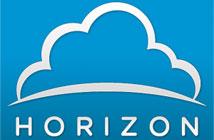As I wrote in a previous post, Citrix is the first name that’s invoked when discussing the virtual desktop. By far, though, it’s not the only company the delivers a virtual desktop to users. Microsoft VDI with RemoteFX, Red Hat Vitalization for Desktops, Dell/Quest vWorkspace, Desktone and VMware Horizon View all provide reliable, robust desktops too, but with far different architectures. As synonymous as Citrix is to the virtual desktop, VMware is to the virtual server. Practically inventing an industry, VMware was established in 1998 to run multiple servers on a single piece of hardware. It has since added many features like vMotion (which allows the server to move from one platform to another without being brought down) and Physical to Virtual (P to V), which allows existing physical PCs to be migrated and brought into a virtual environment without having to be rebuilt. Not standing still and tapping into the growing virtual desktop market, VMware has invested heavily in VDI solutions. It was relatively late to the game with desktop virtualization, but by leveraging its existing technologies -- like its hypervisor vCenter -- and some key partnerships -- like Teradici in 2009 -- it delivers a competitive and, some would argue, superior product to XENDesktop. One of the advantages of using VMware Horizon View is that you probably have some of the infrastructure already in place. Since it has 80 percent dominance in the hypervisor market, it’s likely that vSphere is already used by your networking department. vSphere is the core technology of running virtualized servers. If you’re not already virtualizing servers, then that should be the first place you look to start. Of course you don’t have to. Earlier I wrote about XENDesktop’s ability to be leveraged with existing workstations and without the use of a hypervisor. That is, physical workstations spread across the enterprise that employees use every day can be the same PCs they connect to remotely. Until recently, VMware couldn’t do this. But with its acquisition of Wanova’s Mirage last year, it can manage physical desktops, laptops and virtual machines remotely, even while employees use them. In this feature, VMWare now one-ups XENDesktop because Mirage makes virtual copies to the workstation as well as the data center. If there’s a problem with the device, help desk can roll back the PC a day or a week. Of course you’ll need twice the capacity for storage to take advantage of that, since you’ve got the workstation running locally and stored on a server. At the very least, it’s a good solution to get VIPs up and running quickly if they’re hit with a virus, bad patch, crippled driver or whatever. It may be faster to re-provision than to troubleshoot. In 2010 VMware introduced View with Local Mode for offline desktop support. This is a must-have for the mobile office where laptops regularly leave and return. Local Mode allows employees to check out a desktop from the datacenter to run on a client device without network connectivity. When the laptop is returned, all changes are synched and the image is stored. If the laptop is lost or destroyed, the data isn’t because it’s stored on the network. Finally, one of the coolest modules of VMware View is Unidesk, which includes an environmental manager and the technology to save and restore user customizations. Patching Windows is a nightmare when using Microsoft’s solution. Unidesk patches the desktop and delivers applications and customizations, too. It brings most of the desktop management under a single vendor. Is VMware View better than XENDesktop? It really depends on what you’re looking for. Each has features the other doesn’t, and each is updating its core technology all the time. Consider what’s most important to you: If you’re already using an environmental management tool, like AppSense, then Unidesk might be a waste of money. Citrix might be an easier sell to the executive committee because they’re already using XENApp. As I said, there are a lot of options available. Next time I’ll look at Microsoft’s much improved VDI with RemoteFX.
